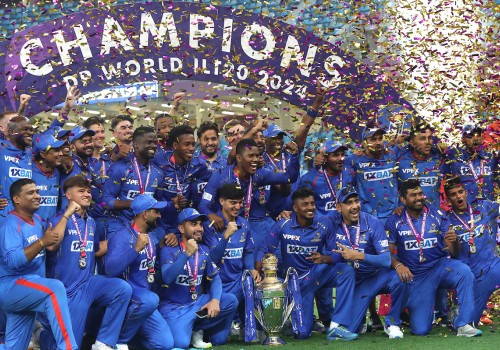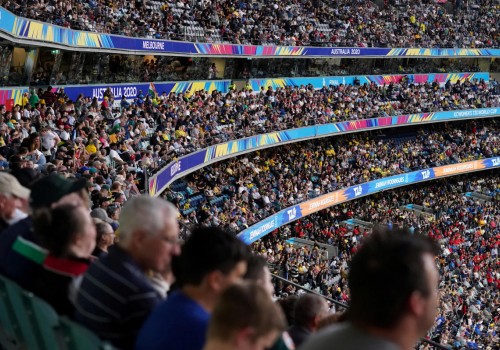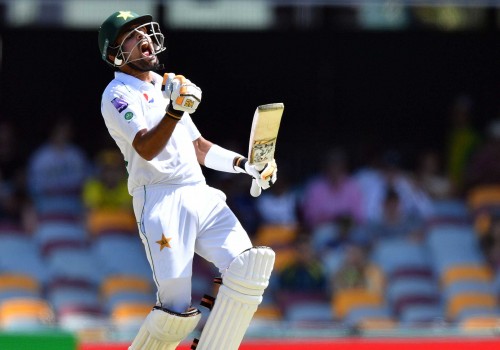The Kings of Kabul – Afghanistan cricket’s rise and rise
When asked to conjure an image of Afghanistan, many outside of the region would think of rugged dusty mountains, tribal chieftains and unfortunately, for so much of its recent history, the pounding backdrop of rocket and kalashnikov fire.
If we at Expat Sport were to suggest to you another image: a manicured wicket, the cheer of expectant crowds and the celebration of substantial cricketing success, you might be forgiven for seeming a little nonplussed. But that is rapidly what Afghanistan is becoming famous for and it’s an astonishing story.
The first recorded instance of a cricket match being played in Afghanistan occurred in 1839 when British troops contested a game in Kabul. So, as with almost all cricket around the globe, Britain planted its initial seed. But unlike in other regions it seemed that cricket was not to the mid-19th century Afghan’s taste and did not really catch on for another one hundred and fifty years. And once again it was conflict and a military presence that created the catalyst.
Afghanistan has been at war with either Britain, The Soviet Union, America or itself almost ceaselessly since the early 1800s and following the Mujahideen’s victory over the USSR in the late 1980s a bitter civil war raged which ultimately led to the rise of the Taliban and the creation of an ultra-authoritarian Islamic state. The 1990s thus saw a huge exodus of refugees fleeing the conflict and finding themselves across the border in neighbouring Pakistan.
It was here that the love for willow and leather was kindled in earnest as Pakistan’s national obsession for the game rubbed off on those displaced. Eventual returnees to Afghanistan brought back a passion and skill set that would eventually lead to the Afghan team qualifying as one of the top ten ODI teams on the planet for next year’s ICC World Cup 2019 and becoming the 12th full international test side to boot.
But the creation of a successful international cricket side never comes easily and perhaps Afghanistan’s triumph has been in the face of the largest of adversities of any cricketing nation in history.
The very existence of a sporting team in the years of Taliban rule was something seemingly unthinkable. Public entertainment of any kind was strictly prohibited and violently punished. So it was no surprise that the founding of the Afghan Cricket Board in 1995 actually took place in Pakistan not in its homeland.
But strict as the Taliban’s iron grip on life was, the lure of the game became too much even for their hardline sporting stance and cricket, as the exception to all other sporting activities, was granted permission to be played on home soil from the year 2000 onwards.
The following year the Afghanistan Cricket Federation (ACF) was elected to become an affiliate team by the ICC. Swiftly following on from this good news, the national team was invited to play in the second tier of the Pakistani domestic league. All of which for any other nation might be seen as the start of the return to a happy daily normality for those involved in playing or watching the game. But not here…
The following year all hell broke loose once again with the 9/11 attacks on the World Trade Centre. Subsequent intelligence reporting its mastermind, Osama Bin Laden had used Afghanistan as his HQ for years. The ensuing enormous US military response, Operation Enduring Freedom, caught the nation’s cricketers by surprise and outside of their own country as they were in the middle of their inaugural tour of Pakistan. Despite the war raging at home, they bravely continued their matches ending up with three defeats and two draws.
We believe it is this determination and steeliness despite great adversity – a national characteristic of the Afghan people – that has been the driving force behind the team’s progress and development, and which has ultimately lifted them to the ranks of one of cricket’s elite teams.
Set against the backdrop of attritional, seemingly endless conflict, the Afghan national team went on its own decade-long campaign during the Noughties. A first taste of victory came in 2003 during a Pakistani tournament and then again in 2006 when they were runners up to Bahrain in the Middle East Cup and then beat an MCC team featuring ex-England batsman, Mike Gatting, by 171 runs in Mumbai. Gatting was out for a duck.
Their first tournament success came in 2007 when they tied for first place with Oman after finishing all square in the deciding match of the ACC Twenty20 Cup. And from that point on their rise has been nothing short of meteoric. 2008 saw them win Division Five and that led to a series of victories and high placing in tournaments that propelled them to the ICC World Cup 2011 qualifiers. Despite a valiant attempt, they were unsuccessful in qualification but their excellent progress gave them official ODI status for four years. In their first official ODI match they beat Scotland by 89 runs.
If the Noughties represented the apprenticeship years, the following 8 years have seen the transformation from journeymen to masters of their craft. In 2013 the ICC recognised their rapid and consistent development by awarding full Associate status to the ACF. This meant more funding, and crucially more exposure to the world’s top teams. In that same year the Pakistan Cricket Board signed a two year mentorship agreement to develop the technical and professional development of the game in Afghanistan. This included coaching, umpiring as well as player development training. The culmination of which, saw them achieve the seemingly impossible for such minnows, ICC World Cup 2015 qualification. And while they didn’t fare too well against the likes of Australia, India and England, they still recorded their first World Cup victory, at the expense of Scotland.
That exposure to the big boys of world cricket has stood them in good stead as they continue their incredible development as a cricketing nation, with 2017/18 being a season of even greater highs. Despite the ICC World Cup 2019 only featuring the world’s top ten teams instead of 14 teams as in previous editions, they have performed another sporting miracle and secured their qualification for next year’s tournament with the highest winning ratio of any international ODI side this year and a thrashing of West Indies by 7 wickets.
That feat, combined with the ultimate accolade, full Test Side status, has made for a heady 12 months. The return to Kabul after securing their spot at the next World Cup was truly exuberant. With car horns blaring, fireworks and AK-47 rounds (thankfully aimed skywards) the heroes lifted their qualification trophy to the ecstatic crowds. Rapturous joy on players’ and fans’ faces alike. It was as if they had won the World Cup already.
It’s no exaggeration to call this journey from total sporting obscurity to well earned international pedigree status in just two decades, staggering. However, set in the context of their nation’s horrific war-torn backdrop, it makes the achievement nothing short of miraculous.
Whatever their success at the World Cup hosted in England next year or their first official test match against India next month, their place in sporting legend is absolutely assured.
And it is with no sense of grandeur or pomp that these hard-working, tenacious, humble cricketers should be called out by Expat Sport for what they rightly are: The Kings of Kabul.
Watch Afghanistan at the 2019 ICC Cricket World Cup – Click here to view our packages




